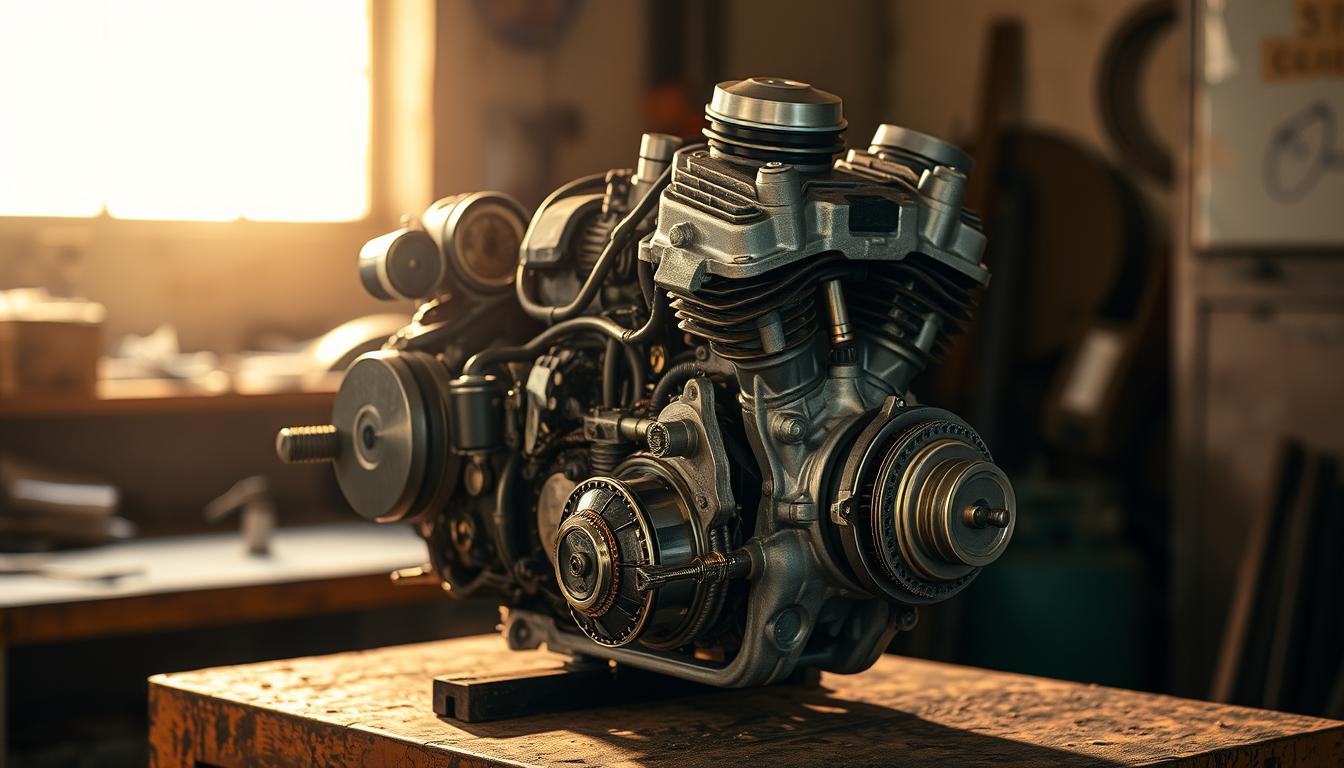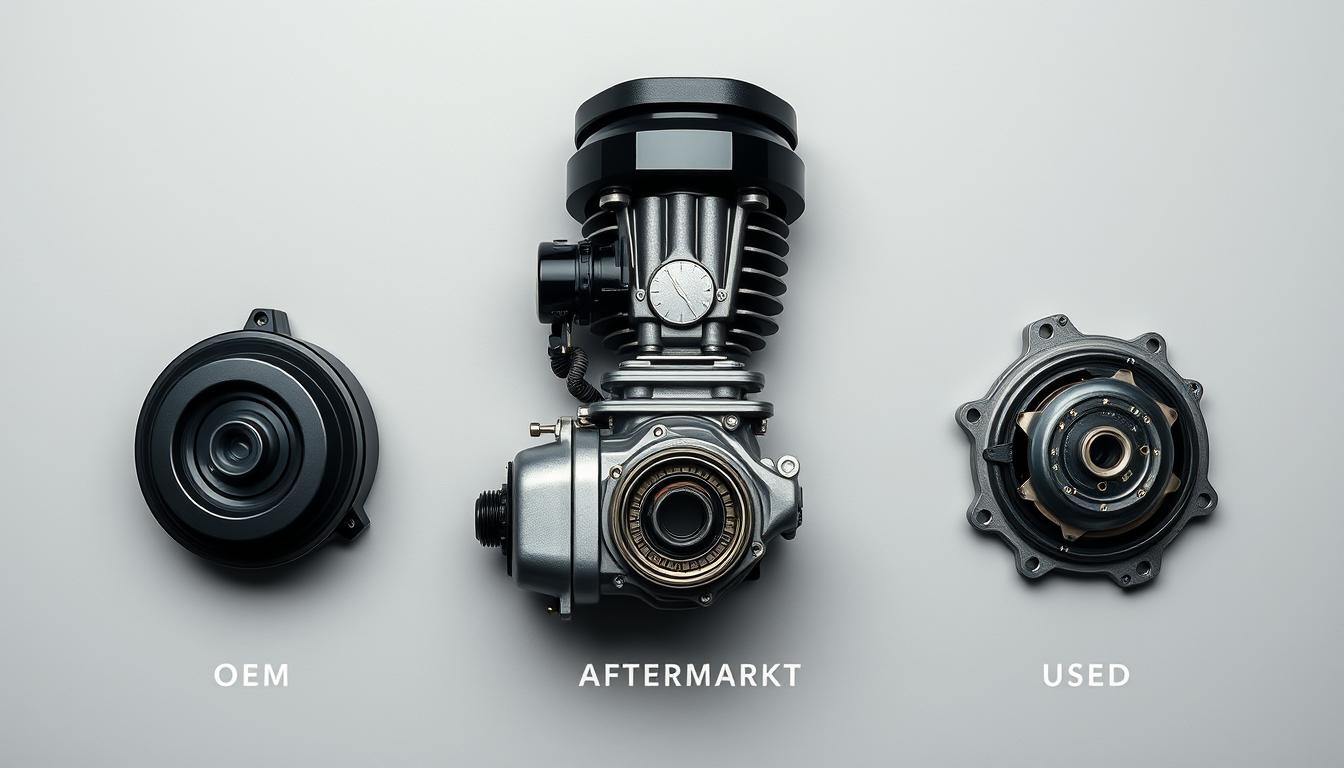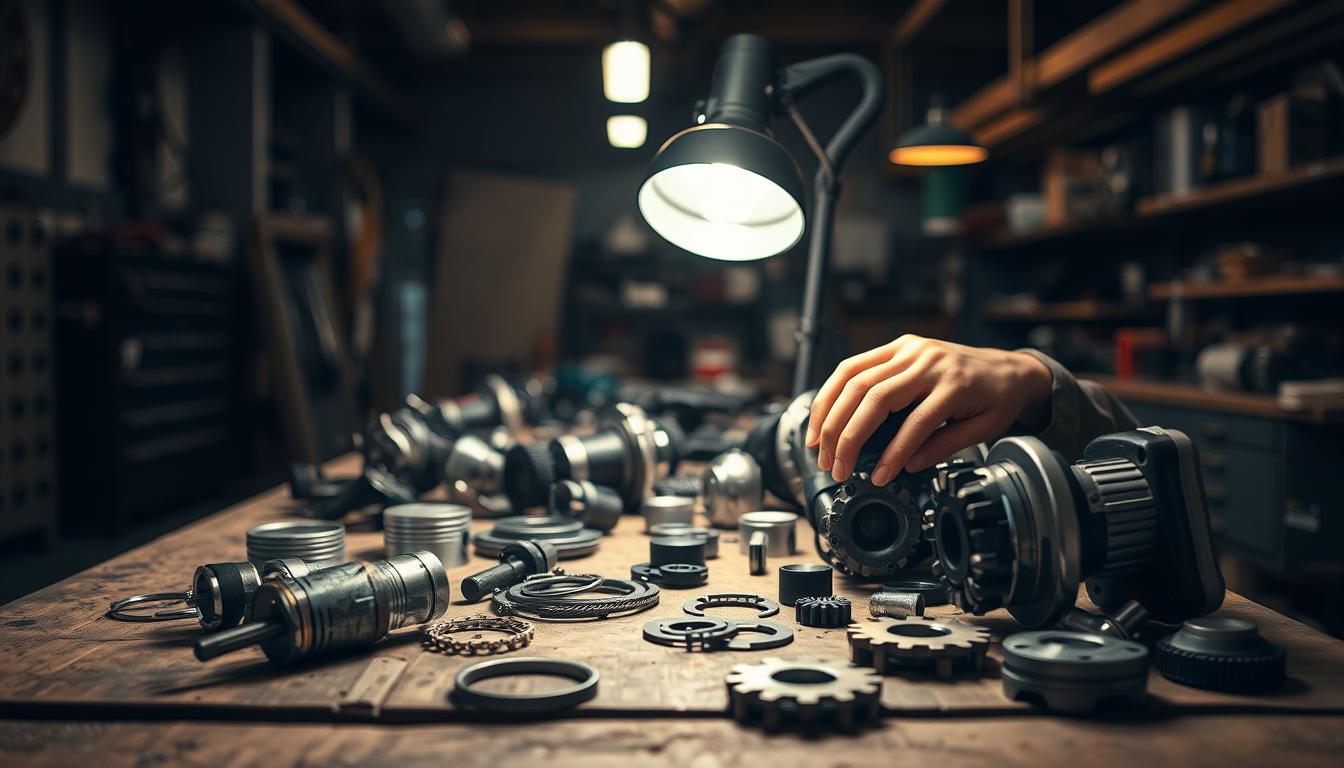Are you considering upgrading your bike with a pre-owned engine but unsure if it’s the right move? Many Australian riders face this dilemma, weighing the cost savings against potential risks. This article dives into the key factors to help you make an informed decision.
Pre-owned engines can be a budget-friendly option, especially for those looking to save on high-performance parts. Brands like Suzuki and Honda often offer reliable options, but the condition of the engine is crucial. Without proper inspection, you could end up with hidden issues.
On the flip side, a well-maintained engine can provide excellent value. Rebuilding or replacing parts like the clutch or cylinder head can extend its lifespan. However, the lack of a warranty and the need for thorough checks are significant considerations.
This guide will explore market trends, inspection tips, and how to source trustworthy suppliers. Whether you’re restoring a classic or boosting your current ride, understanding the pros and cons is essential.
Key Takeaways
- Pre-owned engines can save you money but require careful inspection.
- Brands like Suzuki and Honda often offer reliable options.
- Rebuilding parts can extend the engine’s lifespan.
- Warranties are typically not included with pre-owned engines.
- Trustworthy suppliers ensure quality and reliability.
Overview of Used Motorcycle Engines
Exploring the world of pre-owned bike parts can be both exciting and daunting. Whether you’re restoring a classic or upgrading your current ride, understanding the engine market is essential. This section will guide you through the basics and highlight key trends in Australia.
Defining a Pre-Owned Engine
A pre-owned engine refers to a motor that has been previously installed in a bike. Factors like mileage, age, and usage history determine its condition. For example, a Suzuki engine with low mileage may still offer excellent performance, while an older model might require a rebuild.
Key components like the clutch, cylinder, and piston play a crucial role in the engine’s functionality. Understanding these parts can help you assess the quality of a pre-owned motor. Always check for signs of wear and tear before making a purchase.
Market Trends in Australia
The Australian market for pre-owned engines is thriving, with a focus on affordability and reliability. Brands like Honda and Kawasaki dominate the scene, offering a range of options for different bike types. Prices vary depending on the engine’s condition and specifications.
For instance, Blygo’s 250cc engines are popular for their 4-stroke design and vertical cylinder configuration. These engines are ideal for lightweight bikes and provide a balance of power and efficiency. Consumer confidence is high, especially when purchasing from trusted suppliers.
Recent trends show a growing demand for electric and hybrid engines, particularly in urban areas. However, traditional combustion engines remain a favourite among enthusiasts. Whether you’re looking for a complete motor or specific parts, the Australian market has something for everyone.
Benefits of Investing in Used Motorcycle Engines
Thinking about upgrading your ride without breaking the bank? Pre-owned engines might be the answer. They offer a range of advantages, from cost savings to environmental benefits, making them a smart choice for many riders.
Cost-Effectiveness and Value for Money
One of the biggest draws of pre-owned engines is their affordability. Compared to new models, they can save you up to 30-50% on the price. For example, Blygo’s 250cc engines are precision-engineered and available at competitive rates, offering excellent value for money.
Leading brands like Suzuki and Honda often have reliable options in the pre-owned market. These engines can be rebuilt or upgraded with new parts like the clutch or cylinder, extending their lifespan and enhancing performance.
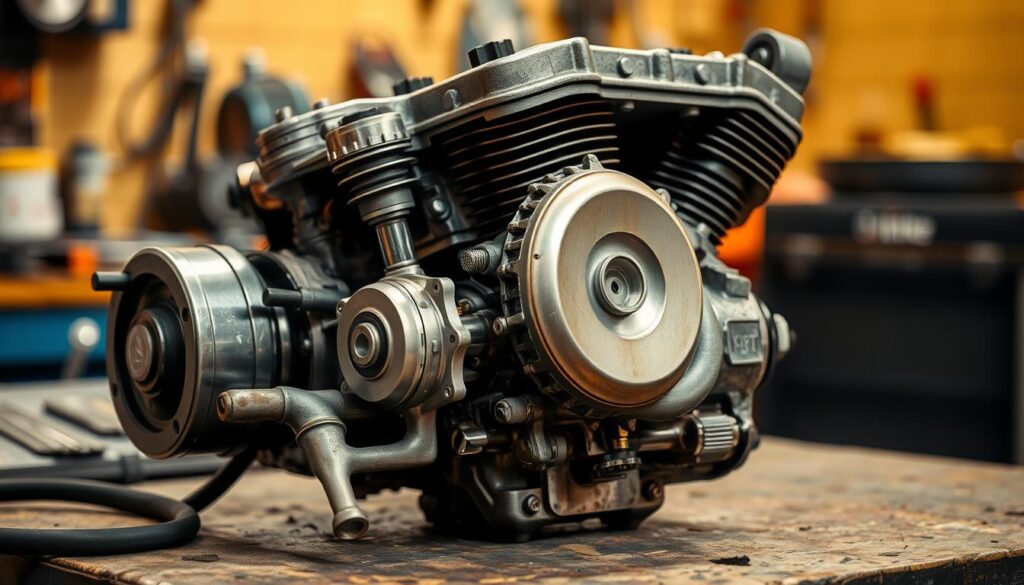
Environmental and Practical Advantages
Choosing a pre-owned engine isn’t just good for your wallet—it’s also eco-friendly. By reusing existing parts, you reduce waste and lower resource consumption. Companies like Baboon Motorcycle Parts focus on sustainability, ensuring their products meet high environmental standards.
Practicality is another key benefit. Pre-owned engines offer flexibility in maintenance and rebuilds, allowing you to customise your bike to your needs. Whether you’re restoring a classic or upgrading your current ride, these engines provide a cost-effective and sustainable solution.
Understanding the Potential Risks
What should you watch out for when buying a second-hand engine? While the price might be tempting, there are risks that could lead to costly repairs down the line. Understanding these challenges is key to making a smart decision.
Quality and Reliability Concerns
One of the biggest risks is the unknown condition of the engine. Even if it looks clean, hidden issues like worn-out parts or internal damage can affect performance. For example, a Suzuki motor with high mileage might seem like a bargain, but it could require extensive repairs.
Market listings often show discrepancies in engine condition. Some sellers may not disclose the full history, leaving you with a motor that struggles to start or overheats quickly. Always inspect the cylinder and clutch for signs of wear before committing.
Warranty and After-Sales Support Issues
Another challenge is the lack of warranty coverage. Most pre-owned engines come “as-is,” meaning you’re responsible for any repairs. This can add to the overall price, especially if major components like the head or gear need replacement.
After-sales support is often limited. Unlike new Honda or Suzuki engines, pre-owned options rarely include guarantees. This makes it crucial to buy from reputable suppliers like Blygo or Baboon Motorcycle Parts, who offer transparency and quality assurance.
To avoid pitfalls, research thoroughly and verify supplier reviews. A well-maintained engine can be a great investment, but only if you know what to look for. For more tips on identifying engine issues, check out this guide on recognising common engine problems.
Tips for Inspecting and Evaluating Engine Parts
Before committing to a pre-owned engine, a thorough inspection is crucial to ensure reliability and performance. Whether you’re sourcing a Suzuki or Honda motor, understanding what to look for can save you from costly repairs. This section provides a detailed guide to inspecting and evaluating engine components.
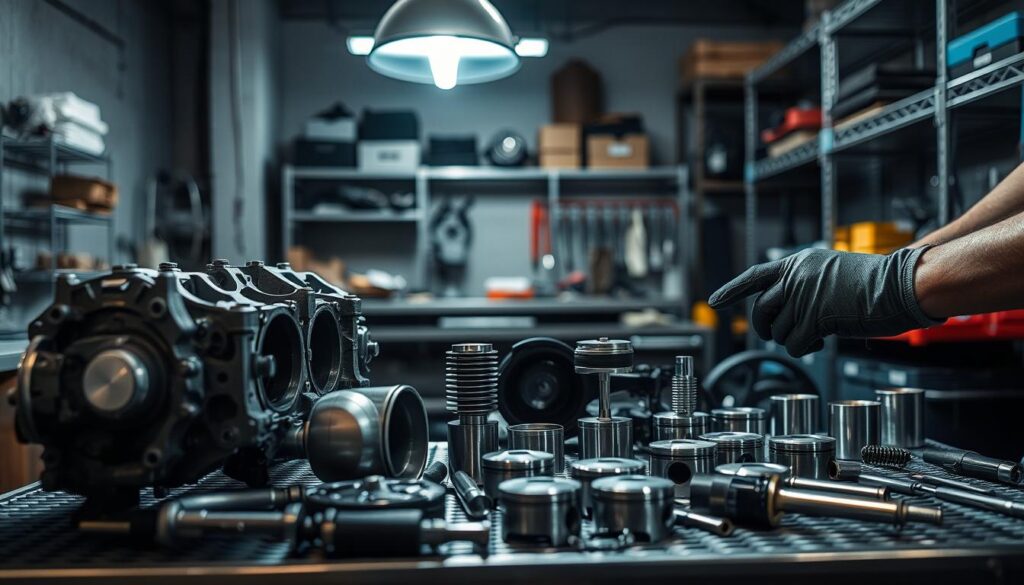
Inspection Checklists for Engine Components
Start by examining the engine’s exterior for cracks, leaks, or rust. These can indicate underlying issues. Next, check the cylinder and head for signs of wear. A well-maintained motor should have smooth surfaces without excessive scoring.
Use the following checklist to ensure a comprehensive inspection:
| Component | Inspection Criteria |
|---|---|
| Cylinder | Check for scoring, cracks, or uneven wear. |
| Clutch | Ensure smooth engagement and no slippage. |
| Gear | Look for chipped teeth or grinding noises. |
| Head | Inspect for warping or gasket leaks. |
Recognising Signs of Wear and Tear
Pay attention to the motor’s internal components. For example, shiny metal flakes in the oil indicate severe wear. Similarly, a clutch that drags or slips may need replacement. Diagnostic tools can help identify hidden issues.
Here are some practical tips for recognising wear:
- Listen for unusual noises like knocking or rattling.
- Check the oil for milky streaks, which suggest water contamination.
- Inspect the drive chain for excessive slack or wear.
By following these steps, you can confidently evaluate a pre-owned engine and make an informed decision. Always buy from reputable suppliers like Blygo or Baboon Motorcycle Parts for added assurance.
Sourcing Reliable Suppliers in Australia
Finding a trustworthy supplier for your bike’s engine can make all the difference. A reliable source ensures quality parts, fair pricing, and peace of mind. In Australia, there are several factors to consider when choosing a supplier, from reputation to after-sales support.
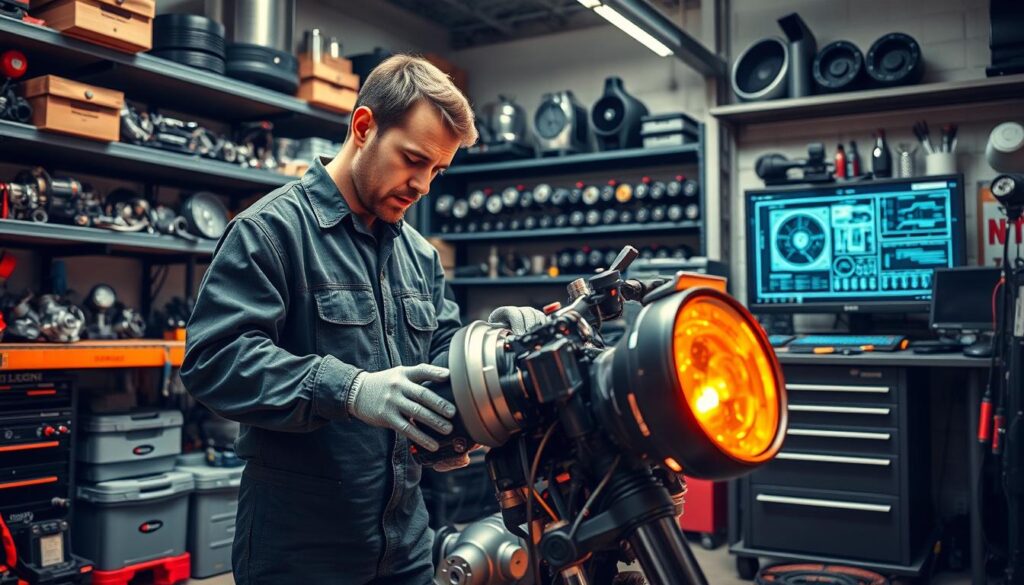
Assessing Supplier Reputation
Start by researching the supplier’s reputation. Look for customer reviews and testimonials to gauge their reliability. For example, Blygo is known for its same-day dispatch and local stock availability, making it a popular choice among Australian riders.
Another key factor is warranty periods. Reputable suppliers often offer warranties on their products, ensuring you’re covered in case of defects. Baboon Motorcycle Parts, with its strong reputation in Europe, is a great example of a supplier that prioritises quality and customer satisfaction.
Comparing Prices and Brand Offers
Price is a major consideration, but it shouldn’t be the only one. Compare pricing structures from different suppliers to ensure you’re getting value for money. Blygo’s competitive rates for complete engines make it a standout option.
Brand offers also play a role. Suppliers like Taverner Motorsports provide a wide range of parts from trusted brands like Suzuki and Honda. This ensures compatibility and reliability for your bike.
Here are some tips for comparing suppliers:
- Check for local stock availability to ensure quick delivery.
- Look for suppliers with strong after-sales support.
- Verify credentials and certifications to ensure authenticity.
By taking these steps, you can source a reliable supplier that meets your needs and ensures your bike’s engine performs at its best.
Engine Rebuild and Maintenance Strategies
Keeping your bike’s engine in top shape requires a mix of regular maintenance and strategic rebuilds. Whether you’re restoring a classic or maintaining your current ride, understanding these processes can save you time and money.
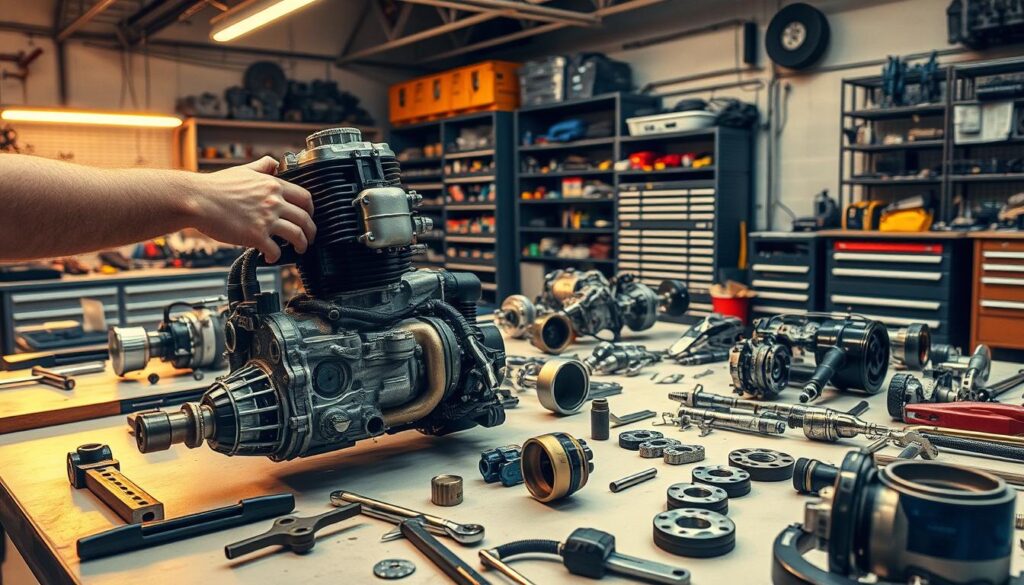
Rebuild Kits and Essential Part Replacements
Rebuild kits are a cost-effective way to restore your engine’s performance. These kits typically include essential components like pistons, gaskets, and bearings. For example, a Suzuki rebuild kit might include everything you need to overhaul the cylinder and head.
When choosing a kit, ensure it matches your engine’s specifications. Brands like Honda offer reliable options, but always verify compatibility. Replacing worn-out parts during a rebuild can prevent future issues and extend your engine’s lifespan.
Maintenance Schedules for Longevity
Regular maintenance is key to keeping your engine running smoothly. Here’s a simple guide to follow:
- Oil Changes: Every 1,500 to 5,000 kilometers, depending on usage.
- Spark Plugs: Replace every 5,000 to 15,000 kilometers.
- Air Filters: Check and replace every 5,000 to 10,000 kilometers.
- Coolant: Change every 3-4 oil changes or every 1-2 years.
Adhering to these intervals can prevent common issues like overheating or poor performance. For example, replacing the clutch cable every 10,000 to 20,000 kilometers ensures smooth gear shifts.
Proper maintenance not only extends your engine’s life but also saves you from costly repairs. As one expert noted, “A well-maintained engine is a reliable engine.”
Maximising Performance with Used Motorcycle Engines
Boosting your bike’s performance doesn’t always require a brand-new engine. With the right approach, you can unlock the full potential of a pre-owned motor. Fine-tuning and integrating compatible parts can significantly enhance power delivery and efficiency.
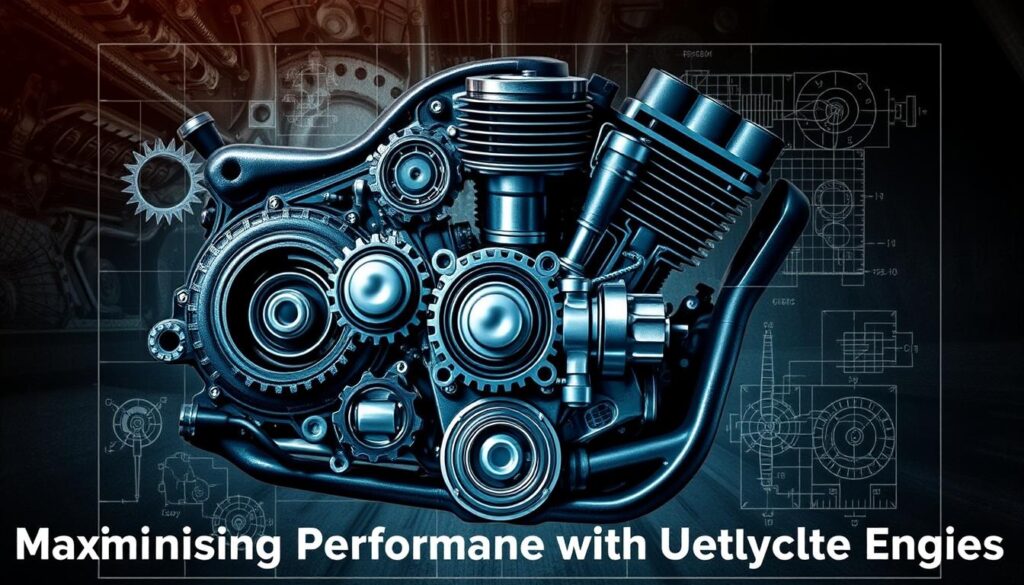
Optimising Engine Motor Functionality
To maximise your engine’s performance, start with a thorough inspection. Check the cylinder and head for wear and ensure all components are in good condition. Fine-tuning the fuel-air mixture can improve throttle response and fuel efficiency.
Upgrading to high-performance air filters and exhaust systems can enhance airflow and reduce back pressure. For example, a Suzuki engine with a high-flow air filter can see a 10-15% improvement in airflow. Dyno tuning is another effective way to optimise performance through precise adjustments.
Integrating Additional Engine Parts Effectively
Adding compatible parts like wiring kits and carburettors can further boost your engine’s functionality. Ensure all components are from trusted brands like Honda or Suzuki for reliability. A well-matched exhaust system can increase horsepower by 5-10% when properly tuned.
Here are some tips for integrating parts effectively:
- Choose lightweight components to reduce rotational mass and improve acceleration.
- Regularly inspect and replace worn-out parts like the clutch or gear to maintain performance.
- Use high-quality synthetic oils to ensure smooth operation and reduce wear.
By balancing performance enhancements with long-term durability, you can achieve a reliable and powerful ride. As one expert noted, “A well-maintained engine is a reliable engine.”
Conclusion
Choosing a pre-owned engine for your bike can be a smart move if you weigh the pros and cons carefully. While the price savings are appealing, thorough inspection and research are essential to avoid hidden issues. Brands like Suzuki and Honda often offer reliable options, but sourcing from trusted Australian suppliers ensures quality and peace of mind.
Pre-owned engines provide cost-effectiveness and environmental benefits, making them a sustainable choice. With proper maintenance and strategic upgrades, you can enhance performance and extend the engine’s lifespan. However, risks like lack of warranty and potential wear require careful evaluation.
Before making a decision, use the tips outlined in this article to inspect components like the cylinder and clutch. An informed choice can lead to better performance, savings, and satisfaction. Explore trusted suppliers and maintain your engine properly for the best results.
For a deeper understanding of how engines work, check out this guide on motorcycle engine mechanics.

